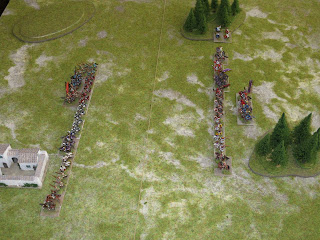The Political landscape
To appreciate how the
migrations of the early 5th century were able to move through and settle within the empire it would do well to look at events that shaped the political scene in the west following the reign of Constantine I. The list highlights the major incursions and civil confrontations after 310 AD to the Rhine crossing of 406 AD. Most of the information is gleaned from the website Fectio.
An overview.
Between the engagements against
contenders for the throne Constantine did fight the Franks (310), Sarmatians
(322), the Goths (323), his successor, Constantine II defeats the Alamanni
(328), the Goths (332), and the Sarmatians (334). In some cases the defeated
were relocated such as the 30,000 Sarmatians sent to Italy and Gaul.
Constans continues this policy
and settles the Salian Franks in former Batavia (342). Civil war ensues (350)
as Magnentius is proclaimed emperor at Autun. The Alamanni, led by Chnodomar,
take advantage of the situation to defeat Decentius (352). Constantius defeats Magnentius
and can now confront the Alamanni and defeats them at Campi Canini (355).
Julian continues the campaign against the Alamanni and defeats them at
Strasbourg (357). Constantius campaigns along the Danube against the Sarmatian
and Quadi (358) while Julian fights the Franks and Alamanni re-settling the
Salian Franks as foederati in Toxandria (358).
The Alamanni cross the frozen
Rhine (366) but are defeated at Scarponna. The invasion of Britain by the
Picts, Scotti and Atacotti (367) is neutralised while the Franks and Saxons
attack the Gallic coast. Britain is sent Jovinus to resolve the state of
anarchy, lacking enough troops he returns to Gaul. The Alamanni cross the Rhine
and plunder Mainz.
Valentinian and Gratian defeat
the Alamanni (368) at Solicinium (Schwetzingen). Comes Flavius Theodosius Sr. begins
campaigning in Britain and pacifies the south. Theodosius rallies the scattered
units in Britain and puts down the rebellion of Valerius (369). Theodosius is
promoted to magister equitum. Frithigern becomes king of the Visigoths.
In retribution for their
attacks on the comes Nannienus, the Saxons in northern Gaul are defeated by
Severus (magister peditum) near Deuso (370). Theodosius Sr. campaigns against
the Alamanni marching from Raetia into Germania. Theodosius continues
campaigning this time against the Sarmatians (372) and Valentinian sends
Alamannic foederati to Britain as reinforcements.
Theodosius is sent to Africa
to put down the usurper Firmus (373) and the Huns enter Europe after defeating
the Alans at Tanais. Theodosius Sr. is, under questionable circumstances,
executed in Carthago. Gratian mobilizes an army to
assist Valens with the situation against the Goths (377). The Alamanni cross a
frozen Rhine (378) to invade the west. Gratian campaigns against them in the
Black Forest. The defeat at Adrianople opens the Danube line for other
invasions. Flavius Theodosius Jr. pushes the Sarmatians back across the Danube
(378).
Elevated to Augustus in the
East, both he and Gratian concentrate the efforts and deal with the Goths
(380,382). Comes Britanniarum M. Maximus defeats the Picts and Scots.
Maximus claims the purple in
the spring (383) and crosses to Gaul, Gratian campaigns in Raetia before moving
against Maximus. Gratian’s army defects to Maximus and kill Gratian. Maximus
agrees to become Augustus of the West (384) while Valentinian II rules the
Middle Empire (Italy, Illyria, Africa). Maximus makes his son Victor Augustus reneging
on the agreement. Theodosius occupied with the Goths and Persians makes no move
against Maximus.
Maximus invades Italy (387)
and Valentinian retreats to Thessalonica. Colonia (Cologne) is threatened by
the Frankish Kings Gennobaudes, Markomer and Sunno (388). The field army
commanded by Nannienus and Quintinus counterattack and are victorious at Silva
Carbonnaria (Kohlenwald). Quintinus is later defeated at Novaesium
(Neuss). Theodosius and Valentinian II
defeat Magnus Maximus at Emona, Siscia (Sisak) and Poetovio (Pettau). Maximus
surrenders and is executed.
Theodosius reorganises the
army and appoints Arbogast as magister militum of the west. Valentinian is made
emperor of the west (389). The Franks again invade Gaul which leads to a feodus
(treaty) between them and Valentinian.
Arbogast campaigns across the
Rhine (391) against the Bructeri and the Chamavi. A law is placed by Theodosius
allowing provincials to defend themselves against rogue soldiers.
Arbogast no longer
acknowledges Valentinian and is later found dead, an alleged suicide (392). Arbogast
sets Flavius Eugenius (magister scrini) to the throne. Arbogast campaigns
against the Franks near Colonia. Theodosius places his second son Flavius
Augustus Honorius as Augustus of the West (393).
Theodosius campaigns against Eugenius
and Arbogast and defeats both at the Frigidus (394). Beheading Eugenius
followed by the suicide of Arbogast, Theodosius is now sole emperor with his
sons Arcadius and Honorius as co-regents in the East and West.
Theodosius dies (395)
splitting the empire, Arcadius rules in the East and Honorius in the West.
Stilicho (magister peditum)
contains Alaric in Thessalia and marches back to Rome. The Gallic prefecture is
transferred from Trier to Arelate (Arles).
Stilicho renews treaties with
several Germanic kings located along the Rhine (396). Stilicho musters forces
to confront Alaric, but is later recalled (397). Alaric is made magister
militum per Illyrium by Eutropius (Arcadius ’magister officiorum). The comes
Africae Gildo separates from the Western Empire with the support of Arcadius
and Eutropius. Mascezel campaigns against Gildo and defeats him at Ammaedara
(Haidra) and Theveste (Tebessa). Gildo is executed (398).
Stilicho marches against the invading
Vandals and Alans in Raetia (401) and Alaric invades Italy in November. Alaric
marches on Milan (402) and Stilicho gathers forces from the border regions to
defend Italy. Stilicho defeats Alaric at Pollentia (Pollenza) and at Verona,
but allows Alaric to escape. Honorius moves the court from Milan to Ravenna. Alaric
leaves Italy (403).
Germanic tribes lead by
Radagais invades Italy (405). Stilicho besieges Radagais near Faesulae
(Fiesole) capturing him (406). An invading confederation of Siling and Asding Vandals
(King Godigisel), Alans (Kings Goar and Respendial), Burgundians and Suevi
cross a frozen Rhine into Gaul.








































